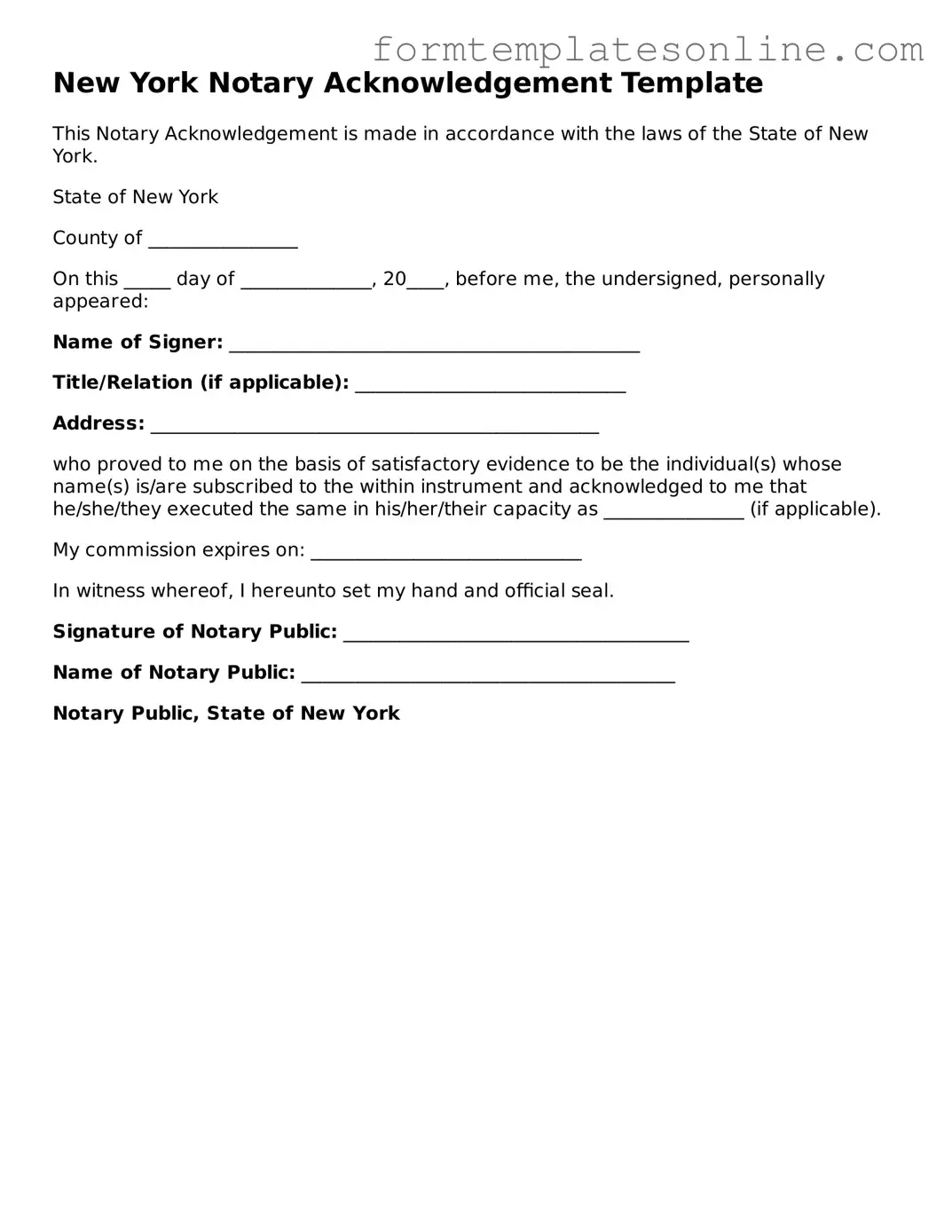What is a New York Notary Acknowledgement form?
The New York Notary Acknowledgement form is a legal document used to confirm that a person has willingly signed a document in the presence of a notary public. This form is often required for various legal documents, including deeds, contracts, and affidavits, to ensure their authenticity and to prevent fraud.
Who can serve as a notary public in New York?
In New York, a notary public can be an individual who is at least 18 years old, a resident of the state, or a non-resident who works or has a business in the state. They must also pass an exam and submit an application to the Department of State. Once approved, they receive a notary commission that allows them to perform notarial acts.
What is the purpose of a notary acknowledgement?
The purpose of a notary acknowledgement is to provide legal verification that the signer of a document is who they claim to be and that they signed the document voluntarily. This helps protect against identity theft and ensures that all parties involved are aware of the contents and implications of the document they are signing.
How do I complete a Notary Acknowledgement form?
To complete a Notary Acknowledgement form, the signer must appear in person before the notary. The notary will ask the signer to present valid identification. After confirming the identity, the notary will fill out the form, which includes details such as the date, the signer's name, and the notary's signature and seal. The signer must then sign the document in the presence of the notary.
Is there a fee for notarization in New York?
Yes, notaries in New York are allowed to charge a fee for their services. As of the latest regulations, the maximum fee for a notarial act is $2. However, some notaries may charge additional fees for travel or other services, so it’s wise to confirm the total cost before proceeding.
Can a notary public refuse to notarize a document?
Yes, a notary public has the right to refuse to notarize a document if they believe the signer is not acting voluntarily, if the signer is not properly identified, or if the document does not meet legal requirements. Notaries are also prohibited from notarizing documents that they have a personal interest in.
How long is a notary commission valid in New York?
A notary commission in New York is valid for a term of four years. After this period, a notary must renew their commission to continue performing notarial acts. Renewal typically involves submitting a new application and possibly retaking the notary exam.
What happens if a notary makes a mistake on the acknowledgement form?
If a notary makes an error on the acknowledgement form, it is important to correct it as soon as possible. Depending on the nature of the mistake, the notary may need to void the original acknowledgement and complete a new one. In some cases, errors can lead to legal challenges, so accuracy is crucial.
